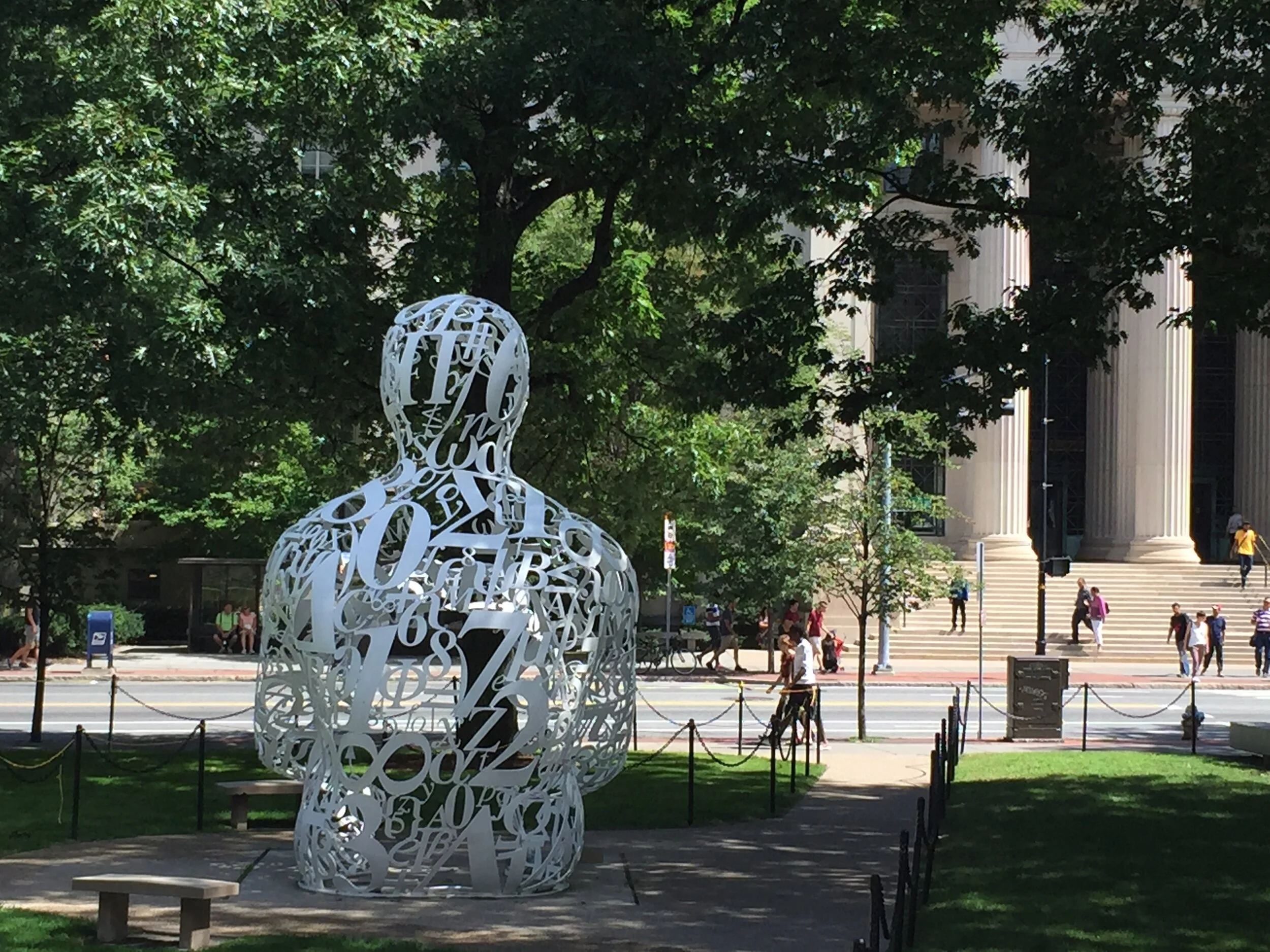“… rebirth to a higher level of consciousness is not accomplished by flying through the air. The ascent is balanced by the descent. The treasure is recovered through encountering the chthonic devourer, the dark side of the Great Mother.” - Marion Woodman and Elinor Dickson
Finding the Feminine Through Place
Presentation for the Association for the Study of Women and Mythology (ASWM) conference, Seeking Harbor in our Histories: Lights in the Darkness.
Depth psychology recognizes that people are deeply connected to the world around them. If we look at the world through metaphorical eyes, we see it as symbolic. The images we encounter become meaningful and provide us with wisdom. By looking at the images of any organization or institution, we can often find the archetypes that are alive and influencing the culture. Archetypes are universal patterns existing in every person in every culture and era. Typical examples of archetypes are the mother, father, child, and hero. Archetypes can also be found in experiences such as death and rebirth or the hero's journey.
For instance, during an extended trip to MIT (Massachusetts Institute of Technology), I became curious about certain aspects of the institute. One, which caught my eye, was the sculpture The Alchemist created by Jaume Plensa. Depth psychology recognizes that the process of alchemy reflects psychological development. Just as the alchemists worked to turn lead into gold, so do we work to turn our psychological darkness into light.
Plensa noted that the sculpture captured MIT's mission by being "part magician, part scientist, and part philosopher." The image brings together three things that are often considered mutually exclusive. It recognizes the need for rational scientific knowledge but also brings in the unexplainable and the existential.
Other images around MIT's campus, particularly the iconic Great Dome, bring in the dark side of the Great Mother archetype and the Feminine Trickster, both of which are generally repressed in Western culture.
C.G. Jung noted that the Great Mother embodies the "wisdom and spiritual exaltation that transcend reason; any helpful instinct or impulse; all that is benign, all that cherishes and sustains, that fosters growth and fertility. The place of magic transformation and rebirth." However, she also embodies "anything secret, hidden, dark; the abyss, the world of the dead, anything that devours, seduces, and poisons that is terrifying and inescapable like fate." The Western worldview is that the mother should only be kind and loving. However, Jung notes that in other cultures, most notably in India's Goddess Kali, the Great Mother archetype is both of the light and the dark and loving and terrible.
Although the dark mother might not be fun to encounter, she is critical to consciousness as she helps us integrate our shadow material and mature psychologically under her pressure and destruction. She is essential to the transformation and development of the psyche, as noted in the quote above by Woodman and Dickson.
These transformation aspects of the dark mother are reflected in a piece of art inside the Great Dome. Students created the artwork to symbolize the pressure they felt and the transformation they experienced at MIT. They used the words "passion, growth, slog, and teamwork" in their art. The art consists of coils created from old problem-solving papers and small silver balls on tracks. The presentation states, "each represents a student on a roller-coaster journey through an allegorical MIT landscape that includes landmark buildings and historical hack references."
The Great Dome also holds the trickster archetype, as the students often use humor to alleviate stress and challenge authority. The Great Dome is the place of the students' hack in which the students execute elaborate, seemingly impossible stunts in the dark of night. One of the most famous was a police car that suddenly appeared on top of the Great Dome. The feminine trickster is particularly present as she uses her humor to challenge the norms of patriarchal society, showing that she is not taking those in power too seriously.
Thus, these brief encounters with images strongly associated with the institution start to reveal the archetypes present in the culture.
